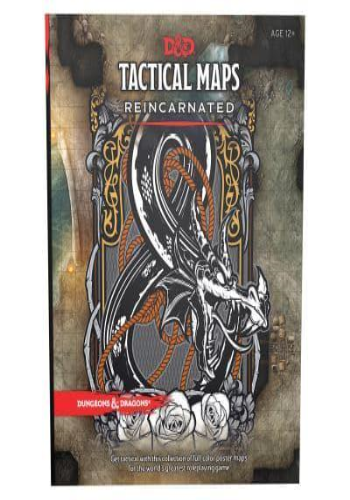Bring your Dungeons & Dragons game to life with this collection of twenty beautifully rendered, full-color, tactical poster maps.
Maps are a key element of every Dungeons & Dragons campaign. A map's importance in bringing your world to life can't be overstated. The same can be said for your encounter maps. Sometimes you need a visual representation of the area your adventurers are in, or perhaps tactical combat is simply the way your group rolls. However you play, we've got you covered. Twenty beautifully rendered, tactical poster maps are contained herein, perfect for bringing any D&D game to life.
- 20 full color poster maps. Each is adorned with a 1-inch grid, perfect for use with D&D miniatures.
- A wide assortment of terrain, environments, and locations are represented.
- This "Best of" collection is carefully chosen from some of our most exciting adventures:
- Tomb of Horrors (4th edition)
- Vor Rukoth (4th edition)
- Demon Queen's Enclave (4th edition)
- Death's Reach (4th edition)
- The Book of Vile Darkness (4th edition)
- Kingdom of the Ghouls (4th edition)
- Dungeon Master's Kit (4th edition)
- Orcs of Stonefang Pass (4th edition)
- Fields of Ruin (3rd edition)
- Gargantuan Blue Dragon (3rd edition)
- Vaults of the Underdark (4th edition)
- Legend of Drizzt Scenario Pack (3rd edition)
- Colossal Red Dragon (3rd edition)
- Red Hand of Doom (3rd edition)







